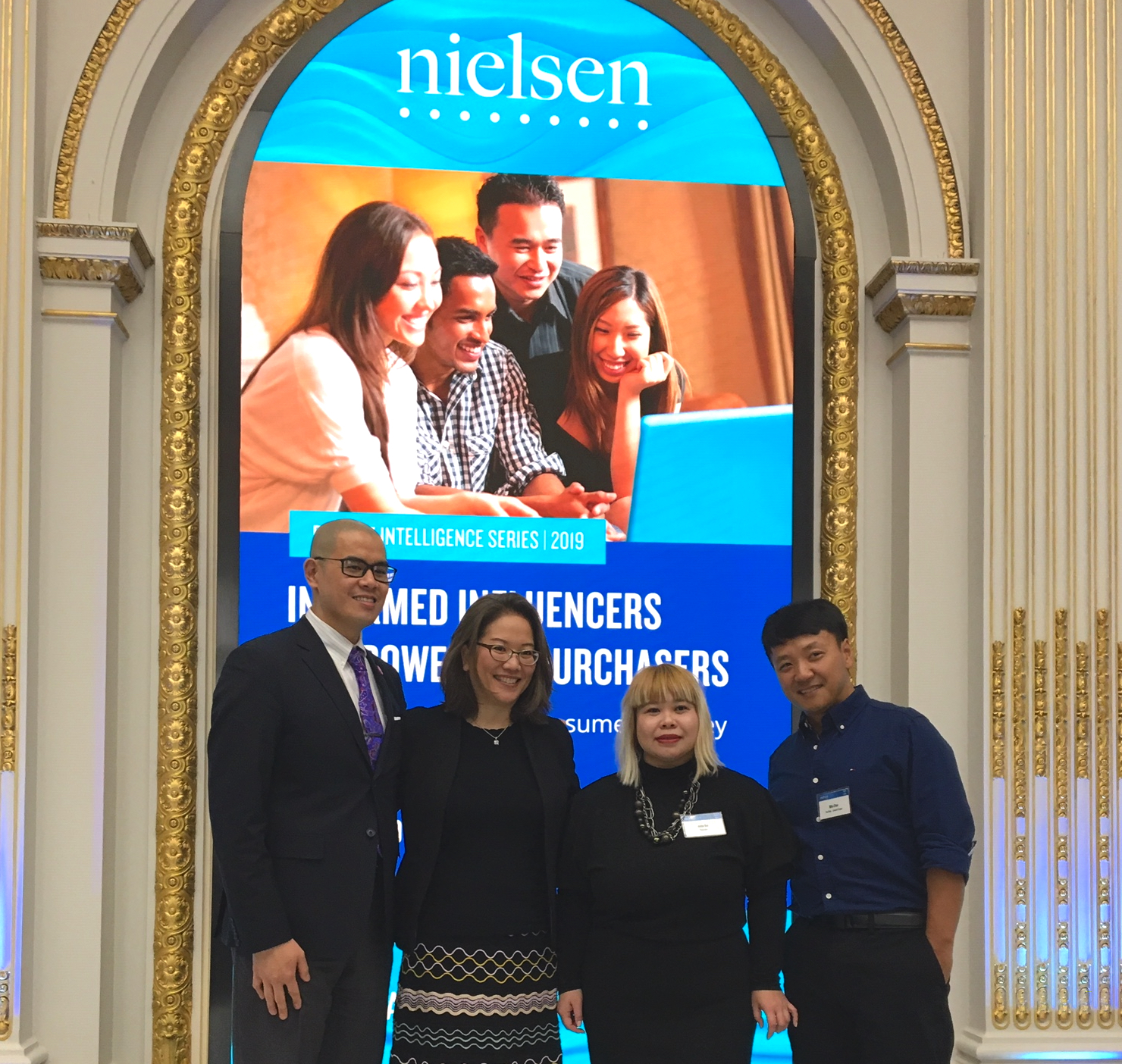Nielsen Tracks the Asian American Consumer Journey

Asian American consumers "are part of this country today and in the future," stated Mariko Carpenter, Nielsen's Vice President of Strategic Community Alliance as she presented the findings of the latest Nielsen annual Asian American study. Taking place during Asian Pacific American Heritage month, this is the seventh year that of the study, but was presented to the industry in New York versus Los Angeles for the first time.
Carpenter began by outlining the unique attributes of the Asian American consumer journey. "We are, indeed, at an inflection point in our community," she stated as movies such as Crazy Rich Asians are playing to mainstream audiences, actor Sandra Oh has been awarded an array of honors for her role in Killing Eve, Andrew Yang is running as the first Asian American presidential candidate and Nestle announced that this year's Gerber baby is Asian -- a first.
The power of Asian American consumers is profound. "We are voting with our wallet, time and voice," Carpenter said. "We are no longer 'the other.' Brands are embracing the diversity." The study found that today's path to purchase is no longer linear with a range of device and platform options to guide the consideration journey.
In addition to being an especially well educated, wealthy and highly employed population, Nielsen reported three major trends in the Asian American community that set them apart from other ethnic groups:
- Family is a key influencer. Asian households are multi-generational with 27% living with that household composition compared to 15% of the general population. Asian households are +17% larger than average (averaging 2.91 persons vs 2.49 for the total population). Extended families, some just starting life in the U.S., account for some of the higher household income. But these homes also tend to have more married couples (63% vs. 48%) and children (40% vs. 31%). All of this contributes to purchasing patterns that are often dissimilar to other groups. Across a variety of consumer categories, the intended user of products purchased for Asian households is often not the primary shopper (98 index), but is instead for children (134), a spouse/partner (120) or other household members (120).
- Digital is the key to entry. Asian consumers learn about new products from digital ads and are the most digitally connected consumer segment. Ninety-seven percent own a smartphone, 81% own at least one device connected to SVOD and 94% have an internet connection. They spend more time on their smartphone (84%) than viewing linear TV (70%). Through all of this, social media plays an integral role fostered by such mega apps as WeChat from China. Nielsen found that 30% of smartphone time is on WeChat where a range of interactions are possible from buying products, streaming music, curating photos and transferring money all in one app environment.
- Shopping is a reimagined experience. Asian Americans are the fastest growing ethnic group population-wise with buying power of $1 trillion. This is the equivalent of the 17th largest GPD in the world -- larger than Switzerland and Turkey. "We are small in size, but we have significant buying power," Carpenter noted. Asian Americans are shifting from offline to online transactions at a higher rate and have a higher spend than the general population. Eighty-seven percent made an online purchase in the past twelve months. They are also early adopters of online grocery shopping (22% in the past 12 months) and are great e-sports fans (49%). In fact, 63% say that they are more loyal to businesses that sponsor their events. "Asians are leaning in now," Carpenter explained. "We are becoming significantly influential." She added that advertisers need to understand that human story is a key to connection. "Reaching Asians on digital has to be thoughtful," she noted.
This young, growing and connected group offers marketers a long-term potential to any investment. "We are experiencing tremendous population growth across the country," Carpenter concluded. "We live longer (86.7 vs. 78.9), our median age is younger (35.4 vs. 38.7) and we have many more years of buying power ahead (51.3 vs. 40.2)."
Pictured in photo at top, left to right: Edwin Wong, Vox; Mariko S Carpenter, Nielsen; Helen Bui, Notorious; Mike Chen, Social Influencer and Content Creator.Click the social buttons above or below to share this story with your friends and colleagues.
The opinions and points of view expressed in this content are exclusively the views of the author and/or subject(s) and do not necessarily represent the views of MediaVillage.com/MyersBizNet, Inc. management or associated writers.


